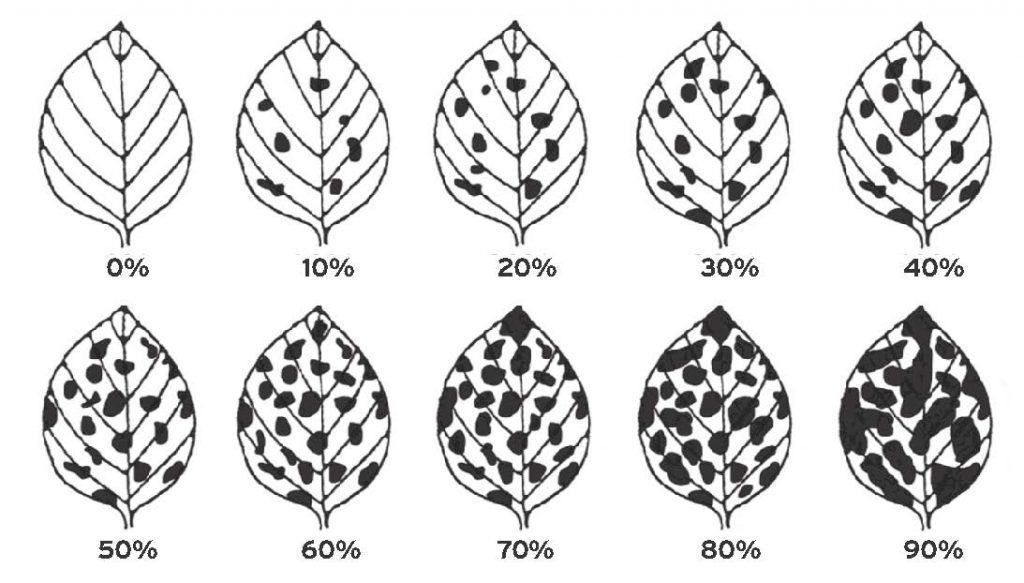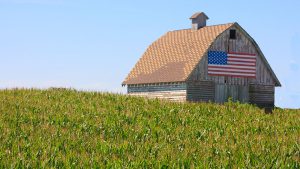Researching disease
IN-FIELD GUIDELINES FOR FARMERS

STUDYING THE INCIDENCE and severity of diseases in your field can help farmers better understand which crop varieties to grow and the best management techniques to use to ensure a profitable crop.
When researchers conduct field trials to determine the resistance level of a new plant variety or treatment affect, such as a fungicide, nematicide, or insecticide, specific guidelines are followed to ensure the accuracy and usefulness of the data.
“We always have issues around field variability, and when it comes to diseases it’s even more important to understand the field you are testing in,” says Albert Tenuta, field crop plant pathologist with the Ontario Ministry of Agriculture, Food and Rural Affairs. “In most cases, fertility, soil type, and soil structure are pretty easy to identify because growers have a good read of their fields and know their tillage program. Diseases unfortunately are much harder, you need to know if you have had the problem in the past, and you also need to know how uniform the distribution of that disease is within that field.”
EXPERIMENTS
If one experimental plot is set up in an area that has a disease and other plots are in an area that doesn’t have the disease, it can be difficult to interpret your findings and the value of the information can be questionable. Tenuta says the way he and his team of field technicians get around this problem is by ensuring treatments are selected at random and conducting a minimum of three replications for each treatment. More replications should be done if the pathogen population is variable.
In some cases, such as when studying a soil borne diseases or nematodes like Soybean Cyst Nematode (SCN), it’s best to have a soil sample done ahead of planting to have a good idea of what the nematode population is. You also want to assess your disease pressure at planting.
“You want to have an idea if a treatment is having an impact on yield but also on the pest of interest, so you want to know what that pressure is at planting, or early on, so that you have something to compare later on,” says Tenuta. “When we do our field tests we are comparing every individual plot to six weeks and to the year end.”
Farmers may want to assess their crops more often. If you are comparing a nematicide treatment to a resistant variety and a check, Tenuta recommends you dig up plants and look for cysts on the roots and take additional soil samples.
If you want to evaluate how well a variety or hybrid’s genetics perform in your fields without the use of a fungicide or other foliar pest management product, Tenuta says you can easily set up a trial. Three small strips, 1,000 feet long, or whatever you can manage to take out, can be used. What you shouldn’t do is split a field in half — it’s not statistically significant to compare one side of a field to the other because one side of the field could naturally have a higher yield potential than the other.
EVALUATION
When testing disease control products, a disease rating needs to be used to evaluate the effectiveness of the treatment in order to have an accurate conclusion. This basic principle is true for any product whether you are evaluating genetics, pest control products, or nutrients. Farmers should always determine performance “in-season”, not just yield. For disease evaluations, Tenuta recommends a one to five scale, where one is no disease visible and five is a totally dead plant. The most accurate assessment is made if done blindly. This can be difficult for a producer who has laid out the strips to do, so Tenuta suggests you enlist help. You might want to ask a crop consultant, retailer, or OMAFRA specialist, especially if you aren’t familiar with the specific symptoms of diseases.
“If you are evaluating your own trial strips, don’t rate plants along the edges of a plot or strip, go into the middle; and try to avoid tire tracks and field edges that could have compaction issues,” says Tenuta.
The type of crop you are testing will determine the best time to do an assessment.
With corn, your best assessment time will also vary depending on which disease you are looking for. Early season soil borne diseases are best evaluated from emergence to stand establishment.
“Most growers evaluate their stands anyways to determine their plant populations,” says Tenuta. “Those early days when plants start to come up after five to seven days we really key in on first because they will tell us if there is an early benefit from those plants getting out of the ground and establishing compared to no treatment and a check.”
If evaluating foliar diseases in corn, you are looking at the ear leaf and above the ear leaf between dent and black layer for late season diseases such as northern corn leaf blight. For soil or residue borne diseases, you start at the bottom of the plant up to the ear (in most cases).
For soybeans, the early stand counts after emergence until stand establishment are important. At the R6 full seed stage, it’s also important to look at the top quarter or top third of the canopy and look at the leaves there.
“We don’t have a lot of foliar leaf diseases in soybean late in the season here (white mould is the exception), unless you have a very susceptible variety,” says Tenuta. “For the provincial soybean trials we focus on Phytophthora, White Mould, and Soybean Cyst Nematode.”
If you are looking at seed treatments in small grains Tenuta reminds growers they want to also assess for overwintering problems, such as snow mould and winterkill, and examine roots. You should also scout at the early T1 fungicide application timing to see if there is any foliar disease down low, and look at the flag leaf or second leaf from the top at the dough stage for any foliar leaf diseases. If evaluating head diseases, collect a hand full of heads (five to 10) per treatment for a proper assessment.
RESOURCES
Farmers looking for more information on how to identify specific diseases can consult resource guides posted under the Production section of www.gfo.ca or the Crop Protection Network (www.cropprotectionnetwork.org). The guides also outline how to best manage specific diseases.
Several apps are also available to help growers with disease issues — including Pest Manger and the new SporeCaster for white mould which are available for both Apple and Android devices.
This article is part of series which highlights lessons from the workshop which may benefit farmer-members involved with on-farm research or those interested in doing some of their own field experiments. Go to www.ontariograinfarmer.ca to review all articles in the series.
The 2018 Technician Training Workshop was sponsored by C&M Seeds, Cribit Seeds, Dow AgroSciences, Grain Farmers of Ontario, Horizon Seeds, Maizex Seeds, Ontario Ministry of Agriculture, Food and Rural Affairs, SeCan, and the University of Guelph. •









